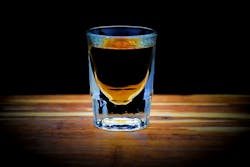Making a Mark on Sustainability: The role of water in crafting Kentucky’s native spirit
After completing an internship with the Kentucky Department of Fish and Wildlife Resources and The Nature Conservancy, Jason Nally traveled around the commonwealth for ten years serving various roles within the government and non-governmental sectors as an educator and wildlife biologist. His current role as environmental champion at Star Hill Farm has allowed him to combine his love for two of Kentucky’s greatest resources — the environment and Maker’s Mark — where he leads environmental and sustainability initiatives and oversees research and conservation activities at Star Hill Farm.
WATER TECHNOLOGY: Water is obviously a critical ingredient in beverage manufacturing. How do you ensure the highest possible quality source water?
JASON NALLY: Clean, limestone-filtered water is an essential element for crafting Kentucky’s native spirit, and that is why we have increasingly dedicated time and resources to protecting the watershed that feeds our lake. Without that reliable source of water, we would not be able to consistently produce the quantity and quality of bourbon that the world knows and loves.
We can positively influence the water source through ecologically enriching land management practices and promoting sustainable agriculture on our property.
WT: We’re seeing more trends revolving around the circular water model. Does that apply to your business?
JN: From a food safety and product quality perspective, the circular water model can be difficult to implement in the beverage industry.
Risk to product quality must be measured to eliminate the risk of contamination.
The key element to consider is that any new and improved method cannot compromise the integrity of our product. Our end game is to consistently produce a very high-quality product that is based on a well-defined flavor vision.
Our lake water is one of our “not-so-secret” ingredients and we have absolutely no plans to divert the use of that water or jeopardize its integrity in any way. This makes the idea of implementing the concept of the circular water model into our system for cooking mash a bit difficult to conceptualize. As mentioned, we can, however, positively influence that water
source through ecologically enriching land management practices. This follows along some of the core concepts of the circular water model, even though it may not be in the traditional “industrial” application of the concept.
WT: Have you implemented any strategies, such as water reuse, to reduce water consumption?
JN: Reuse opportunities are much easier to realize with process water used for boilers, chillers, etc. At Maker’s we’ve installed improved air-cooled chillers, which have also helped significantly decrease water usage. Although we are still quantifying that data, the savings will be significant.
Recently, at Maker’s Mark we installed a second pass to the existing reverse osmosis system. This improvement has allowed us to reclaim reject water in order to replace the use of municipal water in our cooling tower saving us approximately 15,000 gallons per day. WT
